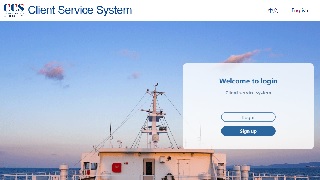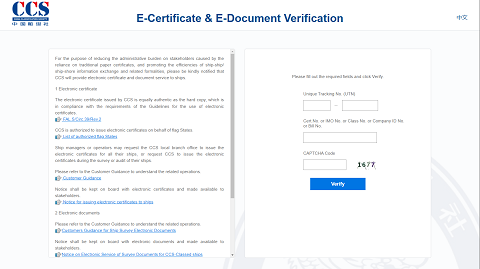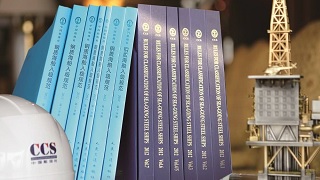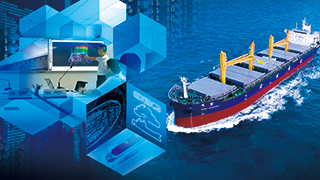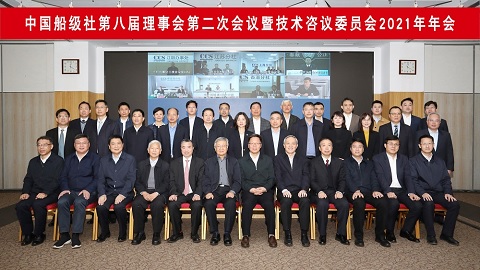Accelerating the development of China's offshore wind power industry is one of the important means for promoting energy structure adjustment and achieving the "dual carbon" goal (to peak carbon dioxide emissions before 2030 and achieve carbon neutrality before 2060).
By Li Hongtao and Wang Bin, CCS Offshore Engineering Technology Center
Accelerating the development of China's offshore wind power industry is one of the important means for promoting energy structure adjustment and achieving the "dual carbon" goal (to peak carbon dioxide emissions before 2030 and achieve carbon neutrality before 2060). Currently, the construction of technical code and standard systems for China’s offshore wind power farms lags far behind the development of offshore wind power. As China's offshore wind power industry was developed from the onshore wind power industry, the adoption of international standards in many offshore wind power projects covers the fields of water resources and electric power, ports and waterways, onshore buildings, etc., and cannot effectively avoid the safety risks in offshore structure design, construction, installation and other links. Therefore, there is still a great improvement potential in establishing code and standard systems for offshore wind power.
China’s existing technical standards for offshore wind power
Table 1 shows China's existing technical standards for offshore wind power at each stage of project implementation, including but not limited to the following codes and standards.
(1) For the planning stage, there are a series of specifications prepared for the early stage of offshore wind power farm engineering projects in China.
(2) For the design stage, except the codes and standards listed in Table 1, there are not any other unified standards in China temporarily. For the Design Institute to design offshore wind power farm facilities, China’s national standards for the industries of hydraulic engineering, architecture and marine engineering or relevant international standards are adopted as the main basis; involving the codes for LRFD/WSD structural design, structural load, aseismatic design, structural steel, pile foundation design, anti-corrosion technology and other aspects.
(3) For the onshore construction stage, except the Code for Construction of Offshore Wind Power Project (GB/T 50571-2010) and Technical Code for Anticorrosion of Offshore Wind Farm Steel Structures (NB/T 31006-2011), there are no other unified technical standards in China so far, and basically, the standards used are international industry standards of hydraulic engineering, building and offshore engineering or other relevant international standards.
(4) For the offshore construction stage, the national standard of the Code for Construction of Offshore Wind Power Project (GB/T 50571-2010), the preparation of which was led by China Three Gorges Corporation, was released in 2010. The code proposes the relevant requirements for construction preparation, construction transportation, foundation engineering construction, installation of wind power equipment, laying of submarine cables, engineering observation and detection, the commissioning and trial run of wind power farms, construction management, etc. Additionally, the energy industry standard of the Technical Code for Construction Safety of Offshore Wind Power Projects (NB/T 10393-2020), the preparation of which was led by China Three Gorges Corporation, was released in 2020. The code proposes the relevant requirements of the construction safety for offshore wind power farm engineering to prevent and reduce the personnel injuries and property losses during construction.
(5) For the operation stage, generally, wind turbine manufacturers are responsible for the operation and maintenance of wind turbines during the earlier period, and enterprises fulfill the relevant tasks according to the manufacturer’s instruction on operation and maintenance, the standards of foreign countries or other industry standards. The national standard of the Offshore Wind Turbines - Requirements for Operation and Maintenance (GB/T 37424-2019) has been in effect since 2019, filling China's gap in the standards of operation and maintenance.
(6) For the discarding stage, as there have been no wind power farm facilities being discarded, there are no relevant codes or standards in China so far.
Table 1 China's unified technical standards adopted at the development stage of current offshore wind power farm projects
Development stage | Unified technical standard |
Planning stage | l Preparation Rules of Offshore Wind Power Farm Projects Planning Report (Trial) (FD 005-2008) l Code for Preparation of Safety Pre-assessment Report of Wind Power Farm Projects (NB/T 31028-2012) l Code for Preparation of Offshore Wind Power Farm Projects Pre-feasibility Study Report (NB/T 31031-2012) l Code for Preparation of Offshore Wind Power Farm Projects Feasibility Study Report (NB/T 31032-2012) l Code for Wind Energy Resource Measurement and Marine Hydrological Observation of Offshore Wind Farm Projects (NB/T 31029-2012) l Technical Specification for Construction Organization Plan of Offshore Wind Power Farm Projects (NB/T 31033-2012) |
Design stage | l Wind Turbine Systems——Design Requirements (GB/T 18451.1-2012) l Design Code of 110kV-220kV Offshore Boosting Substation in Wind Power Farm (NB/T 31115-2017) l Guide for Selection and Laying of AC Submarine Cables for Offshore Wind Power Projects (NB/T 31117-2017) l Technical Standard for Anti-corrosion of Offshore Wind Farm Steel Structures (NB/T 31006-2011) l Standard for Design of Offshore Wind Power Farm (GBT 51308-2019) |
Onshore construction stage | l Code for Construction of Offshore Wind Power Project (GB/T 50571-2010) l Technical Standard for Anticorrosion of Offshore Wind Farm Steel Structures (NB/T 31006-2011) |
Offshore construction stage | l Code for Construction of Offshore Wind Power Project (GB/T 50571-2010) l Technical Code for Construction Safety of Offshore Wind Power Farm Projects (NB/T 10393-2020) |
Operation and maintenance stage | l Offshore Wind Turbines——Requirements for Operation and Maintenance (GB/T 37424-2019) |
Discarding stage | N/A |
In a word, for China's offshore wind power farm construction, there are only comparatively complete technical requirements for the planning stage; the relevant technical requirements for other stages have not been determined yet and require further improvement. A complete technical code system for offshore wind power farms is expected.
CCS's exploration and outcomes in codes for offshore wind power farm facilities
China Classification Society (CCS) entered the field of the offshore wind power farm facilities and equipment in 2006 and implemented the study and formulation of the codes and standards, the classification and survey of equipment as well as relevant certification and technical services.
For offshore wind power construction equipment, e. g. self-elevating wind power installation platforms and floating crane ships, CCS carried out classification survey according to the methods for traditional offshore facilities. Currently, over 70 self-elevating wind power installation platforms have been built or under construction and all have been classed by CCS. The number of these platforms is the largest in the world. For offshore wind power farm facilities, for example, offshore boosting stations and the support structures of offshore wind turbines, CCS make full use its more than 40 years' experience in offshore engineering, analyzed the specific characteristics of offshore wind power farm facilities, and actively carries out relevant technical exploration and study. Then, according to the offshore engineering concept of "whole fields and whole life cycles", CCS has established an excellent technical code system for offshore wind power farm facilities and proposed systematical technical requirements in terms of safety and environmental protection for offshore wind power farm facilities. Currently, CCS has completed the preparation of 6 codes and standards and is preparing 4 codes for offshore wind power farm facilities. Additionally, CCS has been entrusted by the Maritime Safety Administration of the PRC to prepare 4 technical rules of statutory survey for fixed and floating facilities, including offshore wind power farms. Table 2 shows the specific code systems. Meanwhile, the code systems are expanded and improved continuously with the development of domestic offshore wind power.
Table 2 Technical code systems of CCS for offshore wind power farm facilities
Code system | Code system of offshore wind power farm facilities (covering support structures of wind turbines, offshore boosting stations, anemometer tower, submarine cables, floating wind turbine foundations, etc.) |
Released | l Codes of Offshore Wind Turbine (2012) l Guidelines for Offshore Wind Turbine Operation Platform (2012) l Guidelines for Inspection of Offshore Wind Farm Facilities (2017) l Guidelines for Offshore Boosting Station Platform (2019) l Guidelines for Construction Survey of Offshore Wind Farm Facilities (2020) l Guidelines for Construction Quality Acceptance of Fire Protection Engineering of Offshore Boosting Stations (2021) |
Taking effect of plan | l Guidelines for Offshore Floating Wind Turbine Platform l Guideline for Inspection of Offshore Fixed Wind Turbine Foundation l Guideline for Life Extension and Discarding of Offshore Wind Power Farms l Guidelines of Operation Failure Analysis and Risk Control for Offshore Wind Power Farm Facilities |
The text below briefs the Guidelines for Inspection of Offshore Wind Farm Facilities, the Guidelines for Offshore Boosting Station Platform and the Guidelines for Construction Survey of Offshore Wind Farm Facilities. There are also some other codes and standards for the specific types or different stages of offshore wind power farm facilities, but they will not be introduced here.
1. Guidelines for Inspection of Offshore Wind Farm Facilities
The Guidelines for Inspection of Offshore Wind Farm Facilities (2017) can be used as the guidance for any third-party inspection and the relevant parties as it proposes specific technical requirements of inspection by considering the specific characteristics of offshore wind power farm facilities, drawing on and referring to the experience from traditional ocean engineering and studying systematically offshore wind turbines, the support structures of offshore wind turbines, offshore anemometer towers and boosting stations.
The Guidelines consists of the main body divided into 4 chapters and 1 appendix. Chapter 1 describes explicitly the purpose, application scope, definitions and the requirements of inspection and certificates of the Guidelines; Chapter 2 proposes specific technical requirements of inspection for offshore wind turbines; Chapter 3 provides the relevant technical requirements of inspection for the lower support structures of offshore wind turbines and anemometer towers; Chapter 4 states the specific technical requirements of inspection for offshore boosting stations; Appendix 1 shows the examples of the conformance certificates for offshore wind power farm facilities. See the Guidelines for specific contents.
The Guidelines has been applied in several inspection projects of new offshore wind power farm facilities in China.
2. Guidelines for Offshore Boosting Station Platform
The Guidelines for Offshore Boosting Station Platform (2019) is based on the Guidelines for Inspection of Offshore Wind Farm Facilities of CCS. The former was prepared by learning from and referring to the relevant experience of offshore engineering industries both home and abroad and CCS’s experience about offshore facilities, considering the condition of the offshore boosting station projects that have been built, under construction and in inspection, studying the functional demands and design characteristics of offshore boosting stations, and summarizing the similarities and differences between offshore boosting stations and fixed offshore oil and gas platforms. Moreover, the study on the applicability of load resistance factor method and resistance factor for offshore boosting stations was carried out to propose the partial factor of the LRFD design load and load resistance factor for offshore boosting stations. These factors are included in the specific technical clauses of the Guidelines. The Guidelines can provide references for the third-party inspection and relevant parties of offshore boosting stations.
The Guidelines includes 11 chapters and 2 appendixes. Chapter 1 describes explicitly the Guidelines application scope, definitions and the requirements of inspection and certification; Chapters 2 - 12 provide the technical requirements for the general layout, structures, primary electrical systems, secondary electrical systems, mechanical and public systems, fire protection, escape and rescue, communication and signals as well as anti-pollution equipment; Appendixes 1 and 2 are the examples of conformance certificates of offshore wind power farm facilities and the review scope of offshore boosting station platform drawings, respectively. See the Guidelines for specific contents.
The Guidelines has been applied in the inspection projects of more than 20 new offshore boosting stations in waters of Jiangsu, Fujian, Guangdong, etc.
3. Guidelines for Construction Survey of Offshore Wind Farm Facilities
In order to address the absence of the relevant codes and standards for offshore wind power farm construction processes in China currently, CCS prepared the Construction Guidelines of Offshore Wind Power Farm Facilities (2020). The Guidelines proposes specific technical requirements for the whole construction process of offshore wind power farm facilities based on the relevant experience about the ocean engineering construction processes both home and abroad and the specific characteristics of offshore wind power farm construction in China. The Guidelines can provide instructions for third-party inspection, maritime insurance survey and relevant parties.
The Guidelines consists of 8 chapters. Chapter 1 describes explicitly the application scope and basis, definitions and the requirements of inspection and certificates of the Guidelines. Chapter 2 provides the relevant requirements of construction planning and design for offshore wind power farm facilities. Chapter 3 proposes the operation requirements for the environmental conditions in design and construction processes. Chapter 4 provides detailed technical requirements for various forms of lading at wharves; Chapter 5 provides the relevant technical requirements for various offshore transportation forms, the ship stability and strength during transportation and the condition of facilities. Chapter 6 provides detailed requirements for the whole offshore operation, including hoisting, pile sinking, rock socketing, connection, the installation of bucket foundations, auxiliary tooling, etc.. Chapter 7 mainly describes the relevant provisions about the processes such as offshore cable laying and submarine cable protection; Chapter 8 provides the relevant contents about personnel's health and protection. See the Guidelines for specific contents.
The development trend of codes for offshore wind power farm facilities in the future
As China's main "battlefield" of offshore wind power projects moves southwards, the development of China's offshore wind power encounters difficulties, especially the complex geological conditions and harsh ocean environment of Guangdong and Fujian. The monopile and elevated-pile foundations and other offshore support structures for wind turbines are hard to use widely in South China Sea. Especially, the construction costs and difficulties of rock-socketed piles require urgently further exploration and study. As offshore wind turbine capacity grows higher, the offshore wind power projects are developed gradually towards deeper waters. Therefore, traditional fixed wind turbine foundations are not applicable any more, and floating wind turbines must be the development trend for the future.
Hence, the development of codes for offshore wind power farm facilities in China must meet the needs of the new support structures and construction process that are applicable for the South China Sea areas and the floating wind turbine foundations used for deep sea. As offshore wind power farms are continuously upsized and are gradually transferred to deep waters, offshore boosting stations will encounter the difficulty of upsizing and adaption to deep waters. The floating foundations of floating boosting stations can effectively solve the problems of equipment upsizing and are more applicable for deep waters, as they can bear larger equipment weights by their larger buoyancy. Additionally, the hydrogen production through offshore wind power is expected to further cut the costs in offshore wind power projects. Such method can convert the electric energy generated by wind turbines directly into hydrogen through hydrogen production equipment, and the existing submarine oil and gas pipes can be utilized to transfer hydrogen ashore, which can reduce the high expenses in offshore boosting stations and submarine cables and thus shows substantial development prospects. These novel offshore wind power farm facilities will pose greater challenges to the study on China's codes for offshore wind power farm facilities. Moreover, as more offshore wind power farms in China enter operation and maintenance stage, it is urgent to issue codes and standards that are related to their operation, maintenance and discarding, which has to be an important task in the agenda.
CCS follows closely to the development trend of offshore power wind farm facilities and has carried out study on offshore floating wind power facilities based on its several years' experience in ocean engineering floating facilities. Currently, CCS has completed the preparation of the Guidelines for Offshore Floating Wind Turbine Platform. The Guidelines proposes relevant technical and inspection requirements for offshore floating wind turbine platforms and their auxiliary systems and is mainly used to guide the inspection and quality control of the new unmanned offshore floating wind turbine platforms within China's sea areas at the stages of design, construction and installation.
China's offshore wind power development grows vigorously. However, compared to the mature technical code systems in Europe, there are large gaps in the codes and standards for the design, construction, installation, operation, maintenance and discarding of offshore wind power facilities, and there is no complete system of such codes and standards, which certainly will affect China's offshore wind power industry healthy and sustainable development. Especially, when floating wind turbines are adopted as offshore wind power projects enter deep, further sea. The requirements of the relevant load response, movement performance, structural strength, stability and other aspects fall within ocean engineering, and thus traditional ocean engineering disciplines shall play a more important role. CCS has preliminarily established a code system for offshore wind power facilities through several years' study and accumulation in the field of offshore wind power. CCS is willing to work together with other enterprises in the industry to establish technical code system for offshore wind power facilities, providing protection for healthy, sustainable development of China domestic offshore wind power.
Contact:
Li Hongtao
Tel: 022-66375631-3002
E-mail: htli@ccs.org.cn

